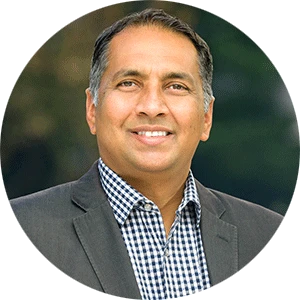Project HOPE Leader Nagesh Borse on the Importance of Renewing PEPFAR
The President’s Emergency Plan for AIDS Relief (PEPFAR) is up for renewal this year. The Kaiser Family Foundation has described PEPFAR as the “largest commitment by any nation to address a single disease in the world.” So far, funding has added up to more than $110 billion, including funding for the Global Fund to Fight AIDS, Tuberculosis and Malaria, according to the foundation.
The PEPFAR website says the program supports nearly 65 million people with HIV treatment and testing services and provides more than 20 million adults and children with life-saving antiretroviral treatment .
Nagesh Borse, Ph.D., M.S., M.A.

Nagesh Borse, Ph.D., M.S., M.A., deputy chief health officer for Project HOPE, stressed the importance of renewing PEPFAR in an interview with Managed Healthcare Executive. Founded in 1958, Project HOPE is a leading global health and humanitarian organization operating in more than 25 countries around the world.
Why is it important that PEPFAR renewed?
PEPFAR remains the single largest initiative by any government to treat a single disease. PEPFAR has changed the epidemic that was seen as a death sentence and took away almost an entire generation in the 1990s to where people living with HIV (PLHIV) became a normal term.
PEPFAR reauthorization is vital to maintain those who receive their daily HIV medication not to be disrupted. Still, many countries rely heavily on PEPFAR to support PLHIV, especially vulnerable populations such as men who have sex with men, female sex workers and other populations that rely heavily on PEPFAR services to receive HIV testing, prevention, treatment and care support.
How has it helped bring the AIDS/HIV community together in terms of care around the world?
PEPFAR has played an important role as a global convener to bring all stakeholders from private, public, government, non-government, civil service, and community-led entities together to fight HIV/AIDS. Without PEPFAR, the strong leadership to lead HIV/AIDS agenda and leverage its strong platform for other emerging diseases such as Ebola, COVID-19, Mpox and other global threats will be lost.
PEPFAR’s investment in HIV/AIDS vaccines came in very handy when COVID-19 vaccine development was an urgent priority. While HIV/AIDS community is still desperately searching for its vaccine, the platform developed by PEPFAR was very useful in developing an mRNA vaccine for the COVID-19 response.
Finally, PEPFAR has provided many opportunities locally, globally and domestically to develop skilled public health researchers, programmers, and managers. The investment and contribution directly to HIV/AIDS and indirect benefits for many other global health priorities will be lost without PEPFAR.
What is the danger if it isn’t renewed?
Without PEPFAR, there are chances that not only HIV/AIDS programs in PEPFAR-focused countries will collapse and lead to a huge disruption of services to more than 25 million PLHIVs. The danger is high mortality in PLHIV due to lack of access to their medications and increases in new infections as prevention and testing services will collapse.
What can be done to ensure the program stays in place?
PEPFAR researchers, programmers, and managers should document the progress and impact of PEPFAR on individuals, families, communities, and countries affected by HIV/AIDS.
PEPFAR-supported civil service organizations and community champions should advocate for reauthorization and create awareness about the potential dangers of its undoing of PEPFAR.
Private sector entities working in HIV-burden countries should contribute their resources and engage with the US government to co-create agenda for the future of PEPFAR.
U.S. taxpayers should learn more about the impact of tax dollars in bringing health equity and gender balance in many low- and middle-income countries. They should continue to work with their local leaders to demand effective programming of PEPFAR.
What does Project Hope have planned for the year ahead in helping those with HIV/AIDS?
Project HOPE looks at three Cs — COVID-19, climate, and conflict — and their impact on PLHIVs. Project HOPE invests strategically in helping countries rebuild in the post-COVID pandemic era. Project HOPE is studying the impact of climate and extreme weather events on health systems and HIV/AIDS.
Project HOPE wants to invest in the holistic care of aging PLHIVs, where PLHIVs not only benefit from HIV/AIDS services but also meet their unmet needs for health issues.
What do you see as the most important way for HIV care to improve in the years ahead? What is going to make a difference?
Single-tablet versions of tenofovir-lamivudine-efavirenz and tenofovir-lamivudine-dolutegravir were a major achievement.
Expanding options for HIV prevention in high-risk communities using new biomedical innovations and tools will make a huge difference. Long-acting injectable treatment which is discrete and with potentially low or no side effects, could be a game changer in coming years.
FDA Accepts NDA for Gilead's New HIV Prevention Shot
February 18th 2025Lenacapavir is a twice-yearly injectable medication designed to be used as pre-exposure prophylaxis (PrEP). The FDA is giving this drug a priority review and expects to make a decision by June 19, 2025, according to a release.
Read More